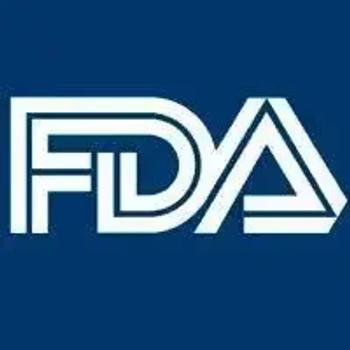
Interim ENLIGHTED data show promise for padeliporfin VTP therapy in UTUC
Key Takeaways
- Padeliporfin VTP therapy shows high efficacy with an 86.5% overall response rate and 73% complete response rate in low-grade UTUC.
- The therapy provides an organ-sparing alternative to nephroureterectomy, addressing the unmet need for effective management of low-grade UTUC.
Vitaly Margulis, MD, reported an overall response rate of 86.5%, and a complete response rate of 73%.
Data from an interim analysis of the phase 3 ENLIGHTED trial (NCT04620239) indicate that padeliporfin vascular targeted photodynamic (VTP) therapy is safe and effective for the treatment of low-grade upper tract urothelial cancer.1
“This treatment is efficacious, at least in this interim analysis. It does have an excellent safety profile. Recruitment will continue and hopefully will result in approval,” said presenting author Vitaly Margulis, MD, the Paul C. Peters, MD, Chair in Urology at the University of Texas Southwestern Medical Center in Dallas, at the 2025 American Society of Clinical Oncology Annual Meeting in Chicago, Illinois.
By way of background, Margulis explained, “Upper tract urothelial cancer is a rare disease. However, it does comprise up to 10% of patients with urothelial cancer. You are all aware that nobody dies from low-grade upper tract cancer. However, because of difficulties and challenges with endoscopic and conservative management, most of these patients will undergo nephorureterectomy, the subsequent loss of kidney function and all of the downstream consequences that this already-vulnerable population will be exposed to. So there's an unmet need for effective organ-sparing options.”
During his presentation, Margulis gave a brief overview of how padeliporfin VTP therapy works: “Photodynamic therapy comprises a photosensitizing agent—in this case, padeliporfin, which is a water-soluble chlorophyll derivative—and a non-thermal light source. In essence, upon light activation, padeliporfin triggers a sequence of events that results in preferential destruction of tumor blood vessels, leading to tumor necrosis, immune recruitment, inflammatory response, etc.”
ENLIGHTED is a single-arm, open-label phase 3 trial that is being conducted in 22 sites in the US, France, Spain, Germany, Austria, and Israel. The primary efficacy outcome of the study is “the absence of [upper tract urothelial carcinoma] tumors in the ipsilateral kidney and ureter during the primary response evaluation (28 plus/minus 3 days after up to 3 treatments in the padeliporfin VTP induction phase),” according to the investigators. Complete response was “defined as absence of disease based on absence of visual tumor on endoscopy, no evidence of tumor on biopsy (if feasible), and negative urine cytology by instrumental collection.”
Patients are eligible for inclusion in the study if they have new or recurrent low-grade, non-invasive UTUC, up to 2 biopsy-proven, low-grade tumor lesions 5 mm to 15 mm in the kidney or 5 mm to 20 mm in the ureter, and absence of high-grade cells in instrumental cytology. Patients are not eligible for inclusion if they have current high-grade or muscle-invasive (>pT1) urothelial carcinoma of the bladder, carcinoma in situ in the upper urinary tract, a history of invasive T2 or higher urothelial cancer in the past 2 years, or have photosensitive skin diseases of porphyria.
Margulis reported an overall response rate of 86.5%, and a complete response rate of 73%. Partial response was observed in 13.5% of patients. Disease recurrence was seen in 10.8%, and progression of disease was seen in 2.7%.
Regarding safety, the most frequently observed adverse events (AEs) were grade 1-2 and resolved within a few days. Among the AEs reported were hematuria (14%), flank pain (10%), procedural pain (6.4%), dysuria (5.2%), urinary tract infection (5.2%), abdominal pain (4.7%), vomiting (4.7%), fatigue (4%), and nausea (3.5%). A total of 19 (9.2%) grade 3 serious AEs were reported; grade 3 serious AEs that were related to padeliporfin VTP treatment included renal colic and flank pain, and these resolved within 2 days.
“Photodynamic therapy in this patient population seems to be effective, at least based on this interim analysis. The safety profile is excellent, and I think we may have another tool in our toolbox to allow these patients to maintain their kidney function and preserve their organs,” Margulis said in his concluding remarks.
REFERENCE
1. Margulis V, Kaufman R, Marcq G, et al. ENLIGHTED phase 3 study: Interim results of efficacy and safety of padeliporfin vascular targeted photodynamic therapy (VTP) in the treatment of low-grade upper tract urothelial cancer (LG UTUC). J Clin Oncol. 2025;43(suppl 17):LBA4513. doi:10.1200/JCO.2025.43.17_suppl.LBA4513
Newsletter
Stay current with the latest urology news and practice-changing insights — sign up now for the essential updates every urologist needs.
















